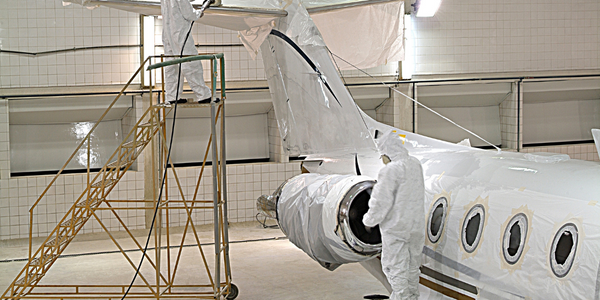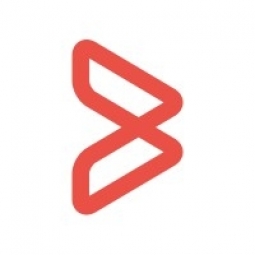Customer Company Size
Large Corporate
Region
- Europe
- America
- Asia
Country
- Switzerland
Product
- Compuware Topaz
- Compuware Abend-AID
- Compuware Xpediter
- Compuware File-AID
- Compuware Strobe
- Compuware Hiperstation
Tech Stack
- IBM mainframe
- Eclipse environment
Implementation Scale
- Enterprise-wide Deployment
Impact Metrics
- Productivity Improvements
- Cost Savings
- Customer Satisfaction
Technology Category
- Application Infrastructure & Middleware - API Integration & Management
- Application Infrastructure & Middleware - Data Exchange & Integration
- Application Infrastructure & Middleware - Database Management & Storage
Applicable Functions
- Discrete Manufacturing
- Maintenance
Use Cases
- Predictive Maintenance
- Real-Time Location System (RTLS)
- Visual Quality Detection
Services
- Software Design & Engineering Services
- System Integration
About The Customer
Helvetia is an all-lines Swiss insurance company with $39+ billion in assets under management and more than five million customers across Europe, Asia, and Latin America. The company heavily relies on its IBM mainframe for all of its core applications, including those that support the company's underwriting, policy management, and financials. The company faces a two-fold challenge when it comes to these core mainframe applications. The first part of the challenge is a declining supply of skilled, experienced mainframe developers. The second part of the challenge is the relentless demand on mainframe applications. Those applications must be constantly updated and modified to provide customers with the insurance products and service experiences they demand.
The Challenge
Helvetia, a Swiss insurance company with over $39 billion in assets under management and more than five million customers across Europe, Asia, and Latin America, relies heavily on its IBM mainframe for all of its core applications. These applications support the company's underwriting, policy management, and financials. However, like many companies, Helvetia faces a two-fold challenge when it comes to these core mainframe applications. The first part of the challenge is a declining supply of skilled, experienced mainframe developers. This declining supply has not yet become a major crisis, but in five years or so, it may be. So Helvetia has to prepare now for that future shortage. The second part of the challenge is the relentless demand on mainframe applications. Those applications must be constantly updated and modified to provide customers with the insurance products and service experiences they demand. So mainframe development has to be fast, reliable, and ready to perform at scale in the production environment. This means Helvetia needs to empower fewer developers with potentially less mainframe experience to deliver more consistent, quality work faster than ever.
The Solution
Helvetia is addressing its current and long-term mainframe application development challenges using multiple Compuware solutions. Topaz was recently adopted because of its rich feature set, its powerful visualization capabilities, and its intuitive GUI. These attributes enable Helvetia's veteran mainframe developers to be more productive and provide much-needed support to developers who have far less experience with the platform. Abend-AID is used to proactively pinpoint production failures and reduce the time needed to fix problems. Its fault management capabilities are becoming more crucial as fewer and fewer developers are experienced in reading system dumps. Xpediter accelerates the development process by analyzing programs and debugging problematic code. File-AID has been in use at Helvetia for more than a decade. Helvetia's developers use File-AID to make sure their applications access the exact right data from the exact right source. Strobe enables Helvetia's mainframe Development and Operations teams to quickly and easily pinpoint any coding inefficiencies. Hiperstation provides Helvetia with the ability to continuously monitor and record end-user application sessions as well as system availability.
Operational Impact
Quantitative Benefit

Case Study missing?
Start adding your own!
Register with your work email and create a new case study profile for your business.
Related Case Studies.

Case Study
Remote Monitoring & Predictive Maintenance App for a Solar Energy System
The maintenance & tracking of various modules was an overhead for the customer due to the huge labor costs involved. Being an advanced solar solutions provider, they wanted to ensure early detection of issues and provide the best-in-class customer experience. Hence they wanted to automate the whole process.

Case Study
Predictive Maintenance for Industrial Chillers
For global leaders in the industrial chiller manufacturing, reliability of the entire production process is of the utmost importance. Chillers are refrigeration systems that produce ice water to provide cooling for a process or industrial application. One of those leaders sought a way to respond to asset performance issues, even before they occur. The intelligence to guarantee maximum reliability of cooling devices is embedded (pre-alarming). A pre-alarming phase means that the cooling device still works, but symptoms may appear, telling manufacturers that a failure is likely to occur in the near future. Chillers who are not internet connected at that moment, provide little insight in this pre-alarming phase.

Case Study
Aircraft Predictive Maintenance and Workflow Optimization
First, aircraft manufacturer have trouble monitoring the health of aircraft systems with health prognostics and deliver predictive maintenance insights. Second, aircraft manufacturer wants a solution that can provide an in-context advisory and align job assignments to match technician experience and expertise.

Case Study
Leading Tools Manufacturer Transforms Operations with IoT
Stanley Black & Decker required transparency of real-time overall equipment effectiveness and line productivity to reduce production line change over time.The goal was to to improve production to schedule, reduce actual labor costs and understanding the effects of shift changes and resource shifts from line to line.

Case Study
Integral Plant Maintenance
Mercedes-Benz and his partner GAZ chose Siemens to be its maintenance partner at a new engine plant in Yaroslavl, Russia. The new plant offers a capacity to manufacture diesel engines for the Russian market, for locally produced Sprinter Classic. In addition to engines for the local market, the Yaroslavl plant will also produce spare parts. Mercedes-Benz Russia and his partner needed a service partner in order to ensure the operation of these lines in a maintenance partnership arrangement. The challenges included coordinating the entire maintenance management operation, in particular inspections, corrective and predictive maintenance activities, and the optimizing spare parts management. Siemens developed a customized maintenance solution that includes all electronic and mechanical maintenance activities (Integral Plant Maintenance).








